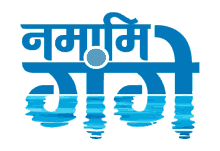About SLCR
Smart Laboratory on Clean Rivers in Varanasi (SLCR) is the joint initiative by the Hon’ble Prime Minister of India, H.E. Shri. Narendra Modi and the Prime Minister of Denmark, H.E. Ms Mette Frederiksen. A Memorandum of Understanding (MoU) was signed between the Ministry of Jal Shakti and the Danish Environment Ministry as a broad-based framework in the field of Water Resources Development and Management including the SLCR initiative.

Concept of Smart Living lab on Clean
River (SLCR) Small River Rejuvenation

SLCR is more than a laboratory; it is an ecosystem of learning, engagement, co-creation, and experimentation in the real environment. SLCR consists of two major components Hybrid Lab (Virtual + Secretariat) which provides the platform to bring all Govt. Dept., Stakeholders, Academician, Industries and Community to engage to evaluate the Global sustainable solutions (technologies. Policies, frameworks) and enable their implementation in local context through Engagement, Learning and Co-creation. The Hybrid lab will also enable the upscaling of the solutions to the basin level and other rivers. The second component consists of the On-field Living Lab having the real field area as an experimental site and is used to demonstrate the co-creation on the field.Hybrid Lab

Major Objective of SLCR
-
Create a platform between Government authorities, Knowledge institutions, technology providers and citizens for knowledge sharing and co-creation to achieve clean river water
-
To bring the global solutions on current challenges in the field of clean river water and conduct research and development to fit in real environment through Living lab approach to make them scalable and economically attractive.
-
To Support NMCG in achieving its vision by focusing on small rivers.
-
Develop the repository of all collected knowledge and technologies, which can be shared through various initiatives like River Cities Alliance (RCA)/Global River Cities Alliance (GRAC) to perform rejuvenation work on other small rivers or tributaries in India and in GRCA member countries.
The main outcomes of the SLCR will be successful demonstration of global solutions in the local context, which have a sound business model and can be upscaled to other small rivers/tributaries.
Structure of SLCR




